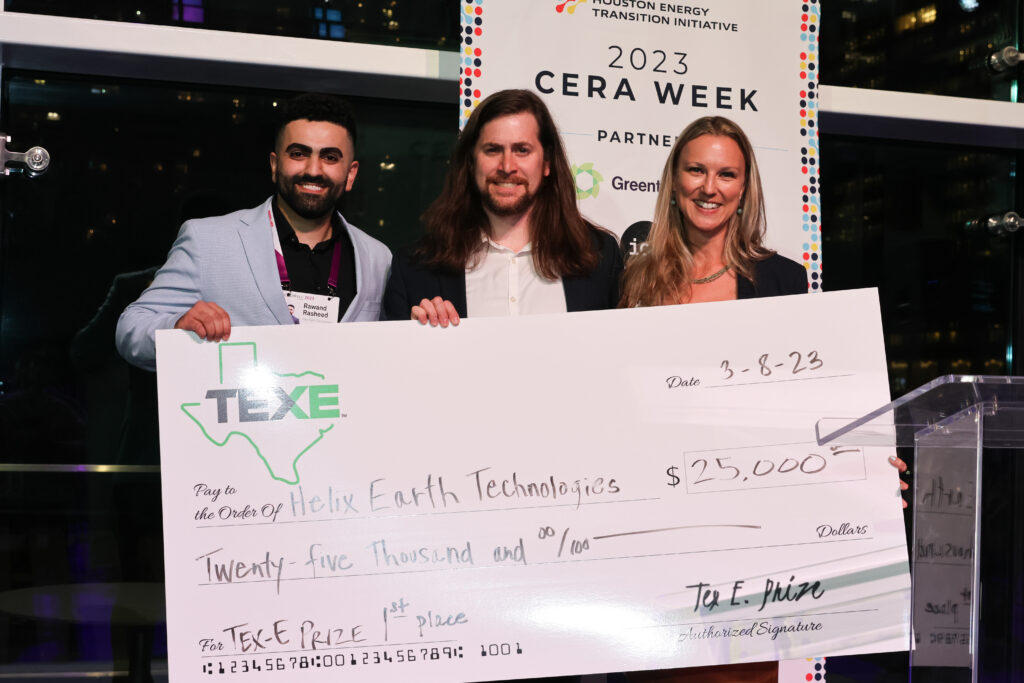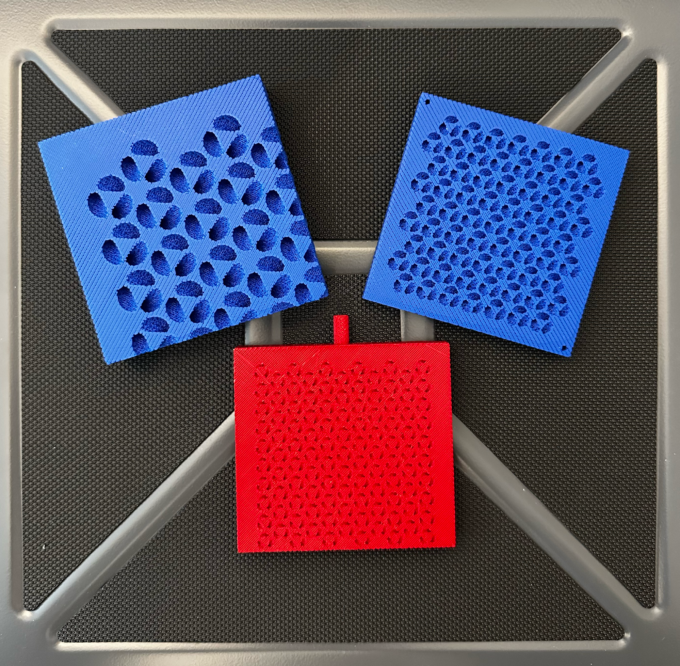Only rocket scientists could develop a technology that solves three distinct climate challenges: energy-efficient air conditioning, small-footprint carbon capture, and cost-effective pollutant filtration.
Rawand Rasheed—the CEO of Helix Earth Technologies, a Ph.D. candidate in mechanical engineering at Rice University, and a NASA alum—says his father inspired him to tackle big scientific problems to help people. Rasheed was born in Iraq, where his father was the first in their family to attend high school and college. His dad became a civil engineer, work that brought the family to the U.S. in the 1990s.
Rasheed was a teenager when his father passed away, and says his dad majorly influenced his life’s path.
“My love for science and engineering really came from him—learning about everything from nature, to space, to cars,” Rasheed says. “I got interested in solving hard problems early on in my life, and specifically problems that could help the climate.”
Rasheed and his co-founder, Brad Husick—a serial entrepreneur with four successful companies under his belt, a degree in astrophysics, and an MBA—are powering Helix Earth Technologies with technology that Rasheed’s team developed at NASA, initially created to filter air on spacecraft after deploying fire-fighting materials.
Helix MICRA™ offers a novel, highly energy-efficient filtration method that routes air through helical channels. As the air travels through the helixes, centrifugal forces fling droplets to the edges. Then the sponge-like filter absorbs the droplets through capillary action.
For air conditioning, this means Helix Earth Technologies can filter out humidity before cooling the air. Dehumidification is a significant energy suck in traditional air conditioning, accounting for about half of the energy consumption in places with significant humidity. The startup’s focusing on the commercial HVAC market, offering an add-on to existing systems that pays for itself in about three years through energy consumption savings.
If deployed at scale, Helix Earth Technologies says its air-conditioning technology could cut today’s global CO2 emissions by two percent while saving $100B in annual energy costs. Rasheed emphasizes that energy-efficient air conditioning is critical as temperatures rise and developing nations come onto the energy grid.
“We have to figure out new ways to make air conditioners cheaper to build and operate so that more people can have access to them, but we also need to develop them in a more energy-efficient manner so that our overall impact on the climate is lower,” Rasheed says. “There’s no reason why we can’t do all of that—we just have to start from a first-principles approach, which is what Helix Earth Technologies is doing.”
As for other applications of Helix MICRA™, Rasheed says Helix Earth Technologies does carbon capture and pollutant filtration “in a fundamentally different way” than today’s processes, and with a much smaller footprint. The startup increases the surface area in liquid-gas chemical reactions by deploying the liquid—for example, liquid amines used in carbon capture—as droplets in an airstream versus as a thin-film process.
This energy-efficient process drastically reduces the space needed for carbon capture, making it possible for more power plants, chemical plants, and other industrial plants to capture carbon from their flue gasses.
“We’re developing new, next-generation carbon capture plants that are more affordable to build and more accessible to facilities that emit large quantities of CO2,” Rasheed says.
Helix Earth Technologies’ multipurpose tech is attracting significant attention. The startup took first place out of 84 at the 2022 Napier Rice Launch Challenge, and earlier this year it won the inaugural TEX-E Prize—a multi-round startup competition for Texas students who are developing innovative technologies and business models to advance the energy transition and address climate change.

The TEX-E Prize is an initiative of the Texas Entrepreneurship Exchange for Energy (TEX-E), a first-of-a-kind collaboration The University of Texas at Austin, Texas A&M University, University of Houston, Rice University, and Prairie View A&M University—powered by Greentown and MIT’s Martin Trust Center for Entrepreneurship. TEX-E aims to create a powerful student-driven entrepreneurship ecosystem in and around Houston, focused on energy innovation and implementing lessons learned from building a successful ecosystem in the Greater Boston area.
Helix Earth Technologies took home the competition’s $25,000 top prize during CERAWeek and the $1,000 audience choice award and became a member of Greentown Houston a few months later.
“I love Greentown, I love the network and people here—it’s a great environment,” Rasheed says. “I’d like to help the great companies that come here grow and be part of their journeys. That’s really what entrepreneurship is about—people are super helpful, and I want to pay it forward. That’s what’s exciting about Greentown.”
After raising more than $1M in pre-seed, Helix Earth Technologies is raising its seed round—Rasheed mentions that investors from Greentown’s Investor Program network have already been getting in touch—and plans to spend the next year building its commercial-scale prototypes and deploying pilots.

